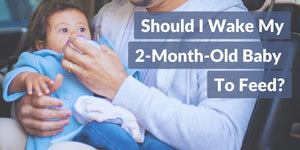During pregnancy, the umbilical cord is the lifeline that connects your baby to the womb. It is the route through which your baby receives nourishment and oxygen. However, it is not needed after birth, so it’s clamped and cut, leaving behind just a short umbilical cord stump that dries and usually falls off by itself in a couple of days.
The lack of proper precautions before the cord falls off can cause infections to enter the baby’s body. Let us discuss umbilical cord care and when to see a paediatrician for the risk of infection related to the umbilical cord.
What is an umbilical cord?
The umbilical cord is a soft tube-like structure that connects your baby to your womb. It is a bundle of blood vessels that transports all the necessary oxygen and nourishment to the baby through blood. It also removes waste products from the baby’s blood that are eliminated by the mother’s body.
The cord is protected by a transparent sheath or membrane and is cushioned by the amniotic fluid (clear liquid in which the baby floats in the womb). The cord is a vital structure that meets all the needs of the baby growing in the womb.
What happens to the umbilical cord after the baby is born?
Soon after birth, the nurse or doctor will place a clamp on the cord close to the baby’s belly button and then cut the cord. The umbilical cord stump is initially yellowish-green, which turns brownish-black as it dries. It eventually falls off within three weeks. If care is not taken, the umbilical cord stump may become infected.
Do's Of Umbilical Cord Care For Parents
Cleanliness is of the utmost importance with umbilical cord care. The following precautions are necessary to prevent infection and umbilical cord care:- Wash your hands before touching the cord area and avoid handling the cord unnecessarily.
- Keep the cord exposed to air as much as possible for better healing.
- Fold the diaper below the cord so that the little one’s urine does not soak the area.
- If the area looks dirty, clean it gently with a cotton pad soaked in warm water, and dab it dry.
- Give your baby sponge baths, but make sure to dry the area afterwards.
- Check the cord daily for signs of infection, such as stickiness, foul smell, or redness.
Don'ts of Umbilical Card Care For Parents
The following precautions should be taken to keep the cord area dry and avoid infections:- Never keep the cord stump enclosed, as it will limit the airflow.
- Do not make any attempt to remove the clamp. Do not touch or pull on the cord often. Remember, it is a natural process, and the cord stump will heal on its own in a few days.
- Avoid using alcohol, antiseptic, or antibiotic sprays without the doctor’s advice.
What is the risk of infection related to the umbilical cord?
Typically, the cord heals naturally, and infections are not very common. However, if an infection does occur, it can potentially cause sepsis if it worsens. Call your paediatrician without delay if you notice the following warning signs:- Redness around the belly button
- Foul-smelling discharge from the cord
- Crying when the cord or the area around it is touched
- Fever
You may call or see the paediatrician if you notice:
- More than a few drops of bleeding when the umbilical cord stump falls off.
- Cord fails to fall off even after three weeks.
- A small reddish lump, called an umbilical granuloma, remains on the belly button and oozes a yellowish fluid. You should visit a doctor if it does not heal within a week.
- If the cord area bulges out when the baby cries, he or she may have an umbilical hernia, a small hole in the abdominal wall through which tissue pushes out when the pressure increases. The hernia usually takes twelve to eighteen months to heal.
Infections of the umbilical cord can be painful for babies. To protect your baby from infection, the best way is to follow safe practices for umbilical cord care.













LEAVE A COMMENT